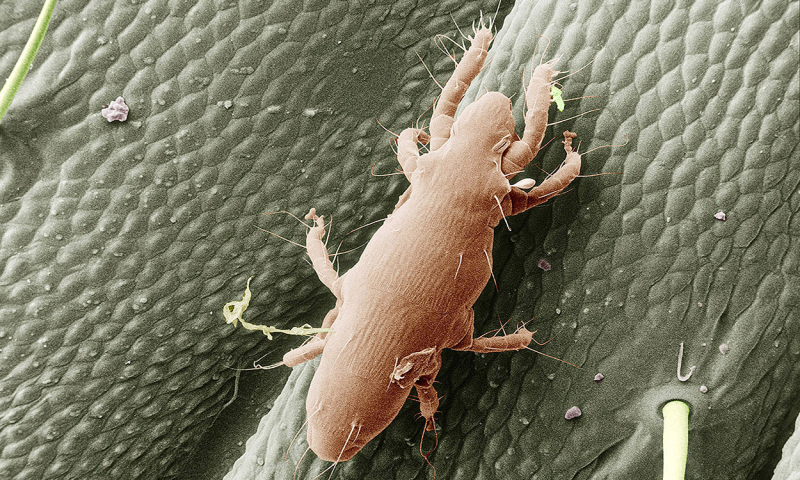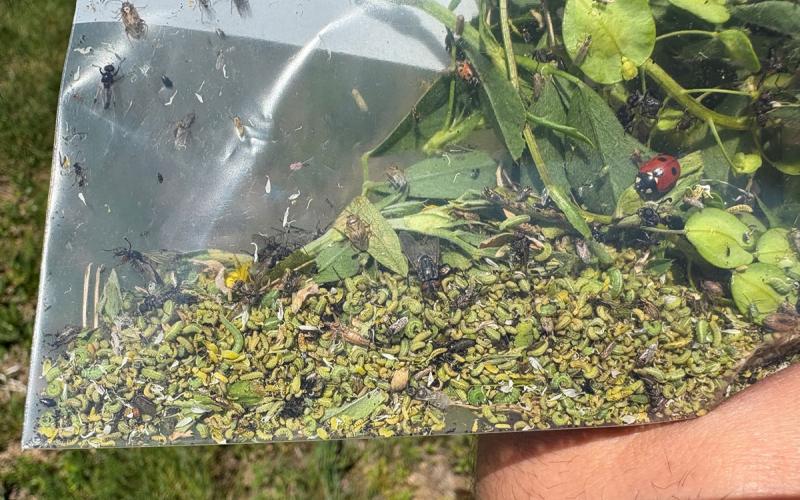Originally Submitted: July 29, 2021
Straw itch mites, also known as hay mites or grain mites (Pyemotes tritici), can be a major problem when present in hay or grain. What’s surprising is that these mites are natural enemies, or predators, of stored-grain insect pests, including caterpillars. Because of their feeding behavior, straw itch mites are considered ectoparasites. They show up in hay or grain when a pest infestation is present. When we enter the infested areas, or work with infested materials, the mites attempt to feed on us. This results in numerous itchy bites.
Description and Behavior

The female straw itch mites are approximately 0.2 mm long and are recognized as being nearly microscopic. After consuming a meal and while developing the offspring, the females can be observed and are approximately 1.6 mm in length. The males are not easily observed. The mites are elongate with four pairs of legs and are a cream color (Figure 1).
After mating, the females give birth a short time later to adult mites that are also ready to mate. This allows for rapid population increases. The next generation can produce offspring within one week of birth.
Straw itch mites have a stylet-like mouthpart that is used to inject saliva containing a toxin into hosts. The toxin present in the saliva paralyzes their prey and allows them to feed on them. Although the mites cannot successfully use humans as hosts, they will readily bite humans.
Symptoms
Bites from straw itch mites are most common on the abdomen, back and forearms but can appear on any part of the body that was exposed. Typically, there are numerous bites that will develop welts on the skin that itch intensely. For individuals who are sensitized, or are extensively bitten, headache, fever, nausea, vomiting, diarrhea and asthma may develop. In severe instances, chills, fever, malaise and anorexia may also develop. Infection may develop if the bites are scratched open. If you experience any of these symptoms after exposure to straw itch mites, seek medical attention.
Straw itch mites can also bite livestock and cause similar symptoms. Animals fed infested grain or straw should be closely monitored. Removing the infested material and providing alternative feed will alleviate the issue over a short period of time.
Management
In most cases, treatment of the grain or straw is not necessary. Removing the infested products can often reduce infestations. For severe infestations, fumigation of the products may reduce the straw itch mite populations.
Straw itch mite populations may also be reduced by storing products until winter, when the cold temperatures will remove their prey and naturally reduce their populations. The best way to avoid a straw itch mite infestation is to keep commodities at low moisture levels and bale straw when it is thoroughly dry. Good hygiene of grain storage facilities will reduce the straw itch mites by reducing their hosts.


